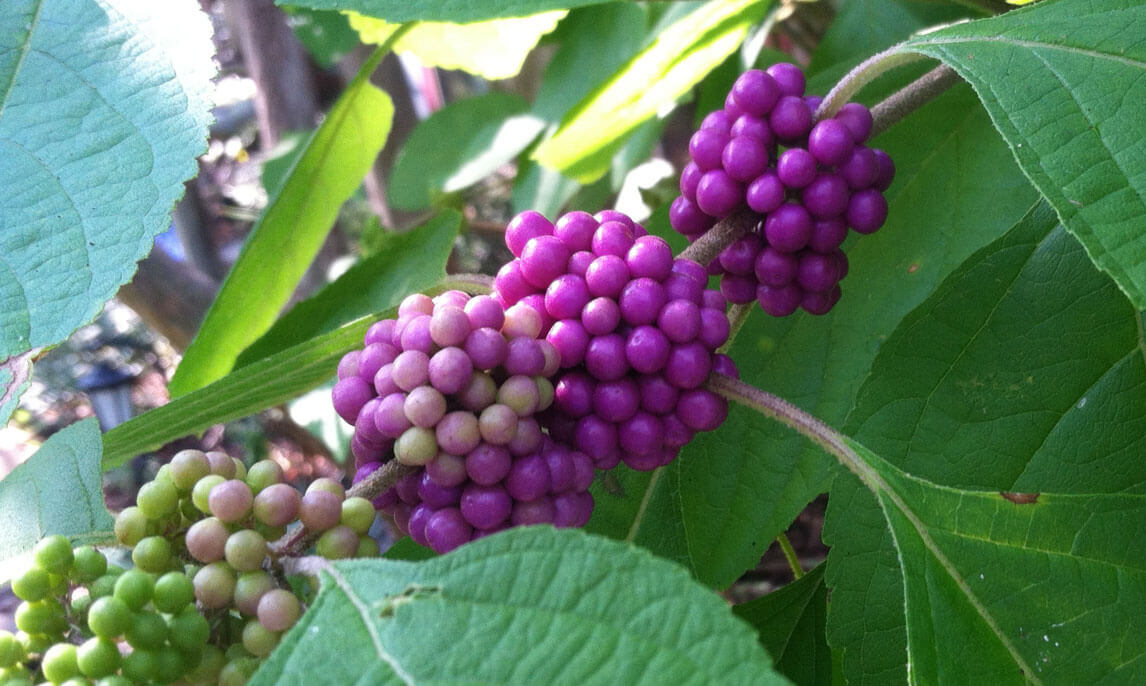American beautyberry is a perennial, native shrub found throughout the southeast that is deer resistant and an excellent food source for birds and pollinators. The rich purple color of the berries adds brilliant color to the shady areas of your garden. When planted in groupings, the color of the berries is a show stopper.
American beautyberry is native to the southeastern U.S. and grows in full sun or part-shade in a variety of soils. As a native plant, this shrub is a food source for many animals, birds, and pollinators.
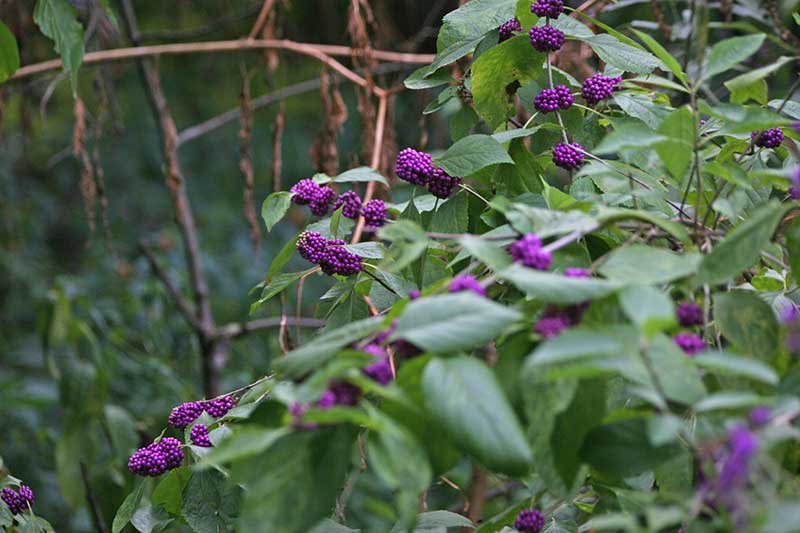
How to Grow American Beautyberry
Beautyberry shrubs grow relatively quickly and do well in part-shade, but they can also be planted in full sun. You will get more berries if you plant your shrubs in a location that receives at least 6 hours of sun. This shrub can get as tall as 8-10 feet, but it often grows to be around 4-5 feet tall unless grown in optimal conditions.
This native shrub can tolerate dry weather but prefers moist, well-drained soil. However, it has low water requirements once established. This shrub is deciduous (loses its leaves in winter) and will be bare in winter. However, the berries will persist after the leaves are gone, adding some late fall color to your garden.
If you want something a little different, there is a variety I have seen for sale that produces white berries.
Learn how to propagate American beautyberry from softwood cuttings.
Pruning
To keep your American beautyberry shrub from getting too tall, you will want to prune it to a nice shape. Pruning should be done in the winter. The berries are produced on new wood, so pruning will keep your shrub at a manageable height and ensure a good crop of berries the following year.
American Beautyberry Flowers
The summer flowers are somewhat inconspicuous, so you might miss them if you aren’t looking carefully. The flowers are clustered around the branches and have a light lavender color with bright yellow stamens.
Beautyberry flowers attract bees and butterflies, so if you’re looking for a good pollinator plant in your shade garden, this is a good choice. This shrub blooms from June to August and will produce berries in the fall that persist until early winter.
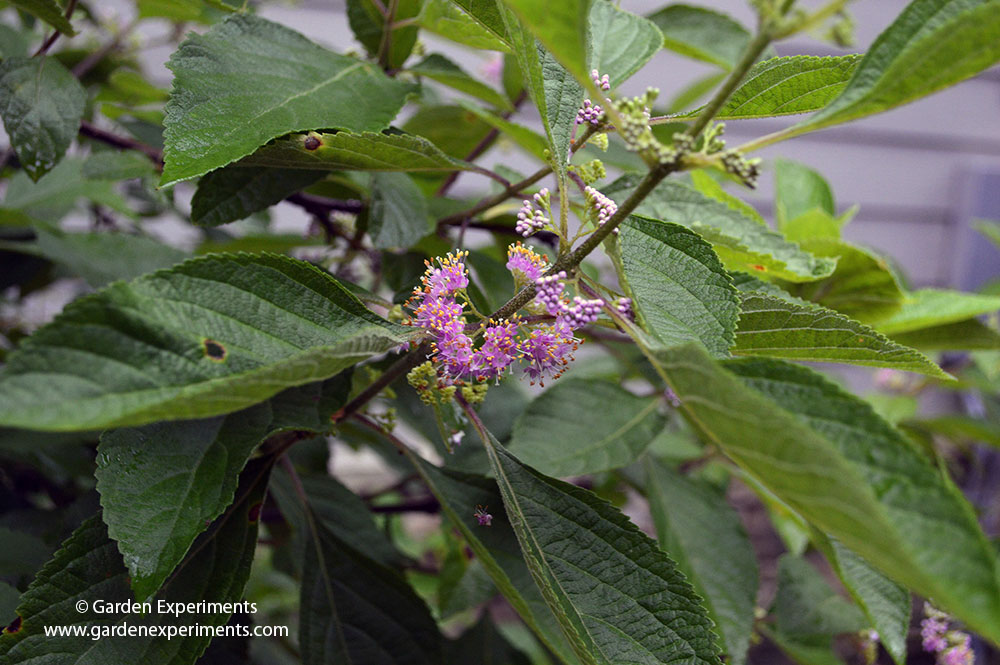

Food for Wildlife & Host Plant
In the fall, the berries are an important food source for black bear, songbirds, opossum, foxes, raccoon, deer, skunks, squirrels, and even quail. Deer may eat the leaves if other preferred foods aren’t available.
This plant is a host for the caterpillars of several butterflies and moths including the spring azure butterfly and the snowberry clearwing moth.
The summer flowers attract bees and butterflies. It’s a great shrub to plant in the shade for pollinators. This shrub is an excellent addition to a pollinator garden or wildlife-friendly garden.

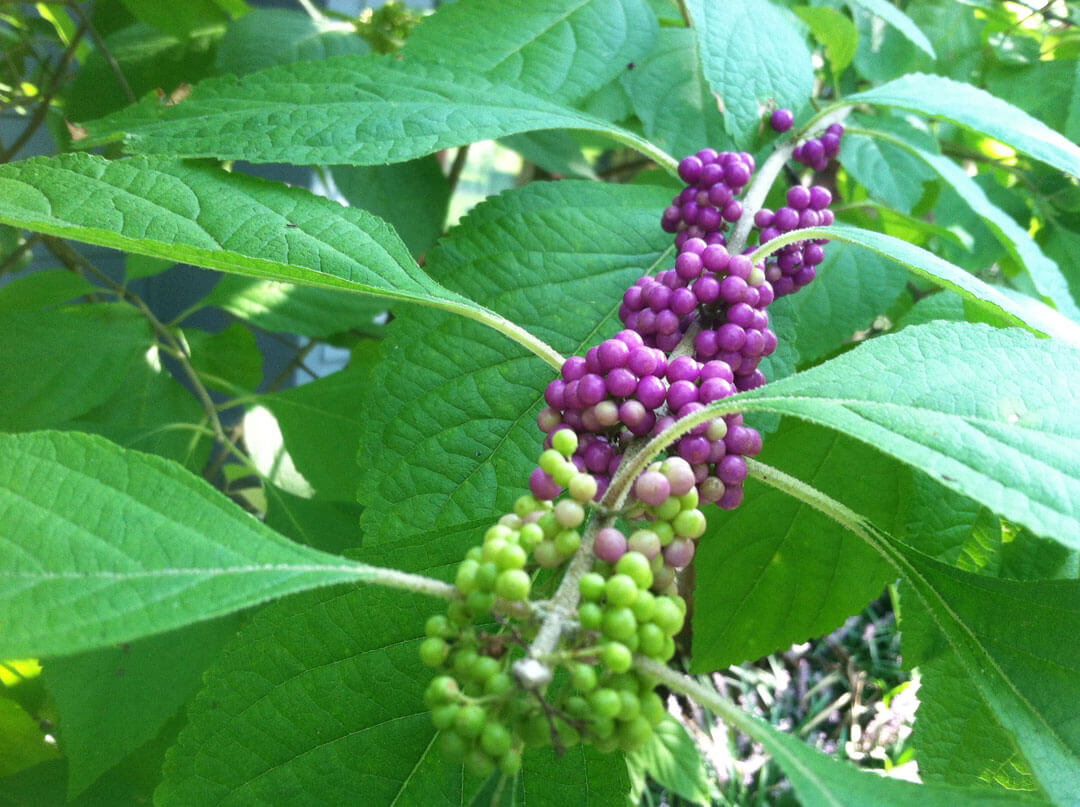
American Beautyberry Resources
Read the USDA plant guide: http://plants.usda.gov/plantguide/pdf/cs_caam2.pdf
More details can be found at: http://www.clemson.edu/extension/hgic/plants/landscape/shrubs/hgic1086.html
American Beautyberry
Callicarpa americana
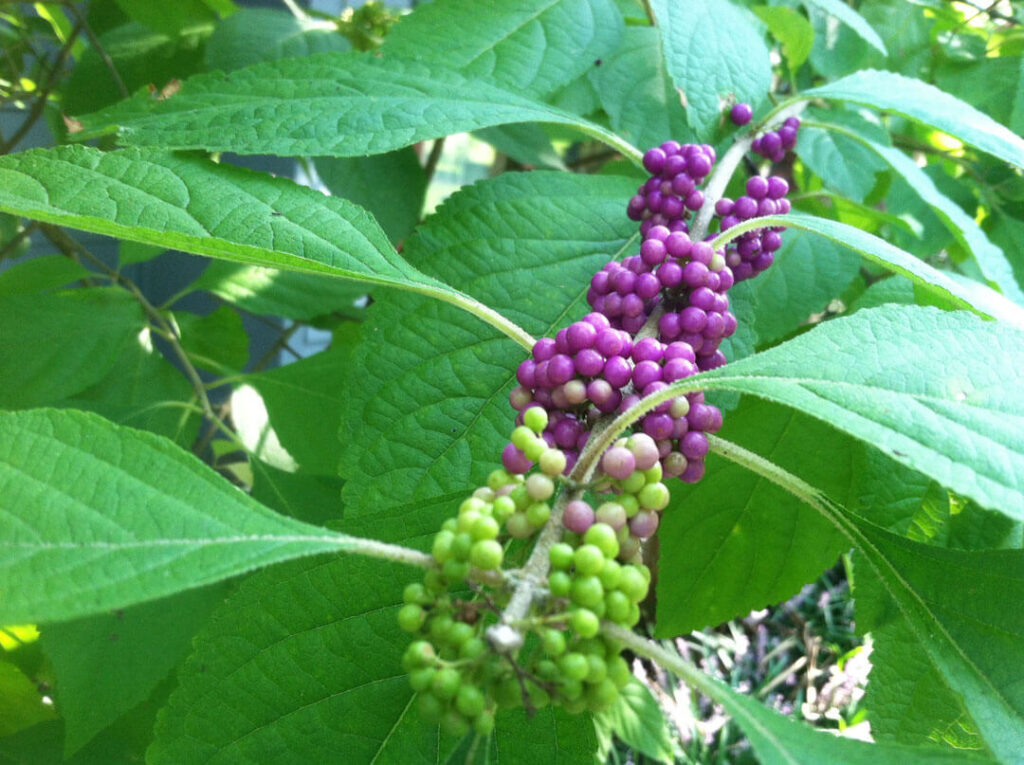
Also known as French mulberry, Spanish mulberry, sourberry, or sow-berry.
The flowers are lavender and very small, but the bright purple berries are a showstopper in the fall.
Height: 3-5 feet
Bloom Time: May – July. Berries in fall.
Light Requirement: Part shade to full sun
Soil Moisture: Moist
Water Use: Low
Wildlife Value: Songbirds and small mammals eat the berries, deer eat the leaves in spring and summer. Pollinators feed on nectar from the flowers in spring. Host plant for larval stage of certain moths and butterflies.

